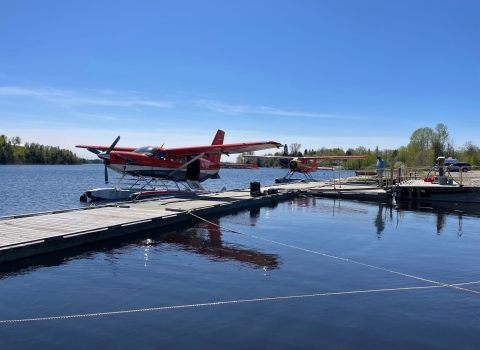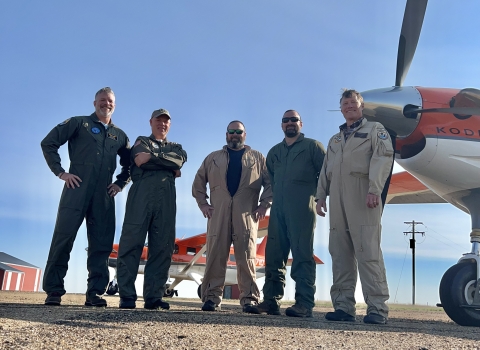Well it was spitting snow flurries in South Dakota on April 28th, so I wasn’t sure how things were going to look when we started the Waterfowl Breeding Population and Habitat Survey on May 1! Thank goodness I met by my long time and trusty observer, Dave Fronczak. Dave has been my observer since 2011. After weeks of planning, we wondered if winter would ever end this year. We had above average snow across much of the Dakotas the past winter, with many areas setting or getting very close to setting records. As the waterfowl survey unfolded, it became clear all that snow this winter set the stage for some particularly impressive waterfowl breeding conditions.
From Pierre, SD, we flew the western regions of the Dakota’s, the geographic region west of the Missouri River. There was as much quality breeding habitat and wetlands were in about as good of condition as you could wish for, the best I have seen in the past 16 years I have been flying the survey. From there we moved to Mitchell, SD and began flying the eastern regions of the Dakotas including the Missouri and Prairie Coteau’s and the glacial drift plain. The southeast region of South Dakota had improved significantly from 2022 as far as the amount of water on the landscape, but there was still some room for improvement.
From Mitchell, SD, we flew to Aberdeen SD, Jamestown, ND, and then on to Minot, ND. I have never seen the prairie pothole region of the Dakotas looking more impressive than what we observed this year. We saw full to overflowing wetlands, flowing streams and landscapes full of vegetation. The region from Huron, SD, to Jamestown, ND, was particularly impressive, with Northern pintails abounding! There were some parts in northeast North Dakota that were dry, mostly as a result of tile draining over the years, similar to what we encounter in the Red River Valley every year. Tile draining is when farmers bury drainage systems under their fields to move water away from areas that would naturally form wetlands and make particularly good breeding and brooding habitat. It’s sad to see and the tile draining continues to expand every year, reducing the quality of waterfowl breeding habitat.
I first started flying the Dakotas in 2008, and I have seen wet years and dry years. I have seen the prairie pothole region of the Dakotas look pretty good in some years, average some years, and even in pretty poor conditions in 2020 and 2021. I will say, I have never seen the pothole region look better or more impressive than what we observed this year. I believe the stage is set for some very good duck production out of the Dakotas in 2023. Conditions are excellent across much of the region. There was a fair amount of vacant habitat this year. I suppose that is still from the lag time of production catching up from the poor years of 2020 and 2021.
It was particularly gratifying to see all of this, as this will be my last survey that I fly. All good things must come to an end and I will retire in September, just in time to sample this years’ production from the ground in my duck blind! I’m looking forward to it. I have relished the opportunity to be part of this group of dedicated pilot biologists! I can’t imagine a more professional and dedicated group. And I’d particularly like to thank Dave for 13 years in the right seat! Here’s to hoping your fall flight is as good as mine!





